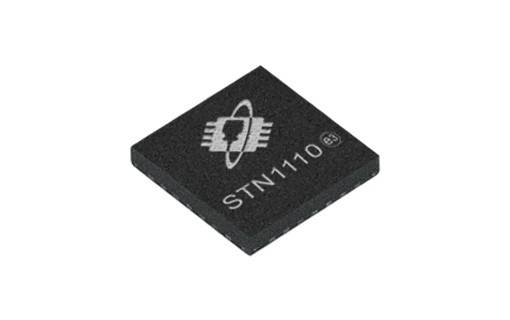The Stn1100 was a groundbreaking multiprotocol OBD to UART interpreter IC, offering a compact and cost-effective solution for accessing vehicle data. While OBD Solutions now recommends the STN2100 for new projects, understanding the STN1100’s capabilities and features remains valuable for those maintaining existing systems or seeking insights into the evolution of OBD interpreter technology. This article explores the key features and benefits of the STN1100.
 STN1110 Interpreter IC, similar to STN1100
STN1110 Interpreter IC, similar to STN1100
Performance Advantages of the STN1100
The STN1100 boasted significant performance improvements over its predecessors, thanks to its advanced hardware and optimized design.
- Enhanced Processing Power: Built on a 16-bit processor, the STN1100 provided significantly faster processing speeds compared to competitors, enabling quicker data retrieval and analysis.
- High Data Throughput: The STN1100 excelled in data throughput, delivering up to double the samples per second of comparable ICs. This rapid data acquisition allowed for more real-time insights into vehicle performance.
- Blazing Fast UART Baud Rates: Supporting UART baud rates up to 10Mbps, the STN1100 offered exceptional communication speed, far exceeding the requirements of even the fastest OBD protocols. This ensured seamless data transfer and minimized latency.
Key Features of the STN1100
The STN1100 offered a rich feature set designed for versatility and ease of use.
- Secure Bootloader: A safe and secure bootloader allowed for firmware updates in the field, mitigating the risk of costly product recalls. This ensured the device could be easily updated with new features and bug fixes.
- ELM327 Command Set Compatibility: Fully compatible with the widely used ELM327 command set, the STN1100 seamlessly integrated with existing software applications, ensuring a smooth transition for users.
- Extended “ST” Commands: The STN1100 provided an extended “ST” command set, unlocking advanced functionality without sacrificing compatibility with the standard ELM327 commands.
- Power-Saving Capabilities: A PowerSave mode with multiple sleep and wake-up triggers minimized power consumption, making the STN1100 ideal for permanent in-vehicle installations.
- Flexible Form Factor: Available in various packages, including SPDIP, SOIC, and QFN, the STN1100 adapted to a wide range of application requirements and PCB layouts.
Supported OBD Protocols
The STN1100 supported a comprehensive range of OBD protocols, ensuring broad vehicle compatibility.
- Legislated OBD II Protocols: Full support for all mandated OBD II protocols, including ISO 15765-4 (CAN), ISO 14230-4 (KWP2000), ISO 9141-2, SAE J1850 VPW, and SAE J1850 PWM.
- Non-Legislated and Heavy-Duty Protocols: Extended support for non-mandated OBD protocols such as ISO 15765 and ISO 11898 (raw CAN), as well as the SAE J1939 protocol used in heavy-duty vehicles.
Ensuring Stability and Reliability
The STN1100 prioritized stability and reliability through robust software and hardware design.
- Field-Tested Software: Utilizing proven code from the OBDLink product family, the STN1100 benefited from extensive real-world testing, ensuring robust performance and minimizing unexpected issues.
- Large Message Buffer: A significantly larger RAM buffer compared to competitors virtually eliminated buffer overflow errors, ensuring reliable data handling even under heavy load.
- Automatic Protocol Detection: A continuously refined automatic protocol detection algorithm maximized vehicle compatibility, even with vehicles that deviated from the OBD standard.
Conclusion: The Legacy of the STN1100
The STN1100 represented a significant advancement in OBD interpreter technology, offering a compelling combination of performance, features, and reliability. Though superseded by the STN2100, the STN1100’s contributions paved the way for more sophisticated and powerful OBD diagnostic solutions. Its influence continues to be felt in the automotive industry today.
